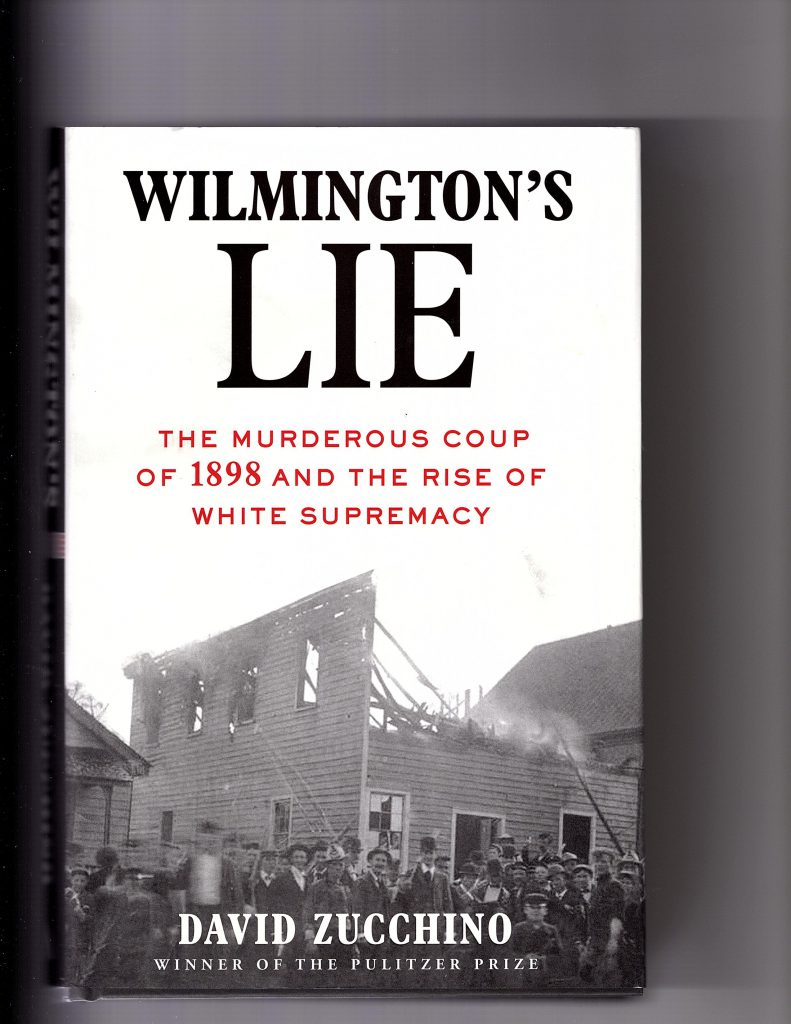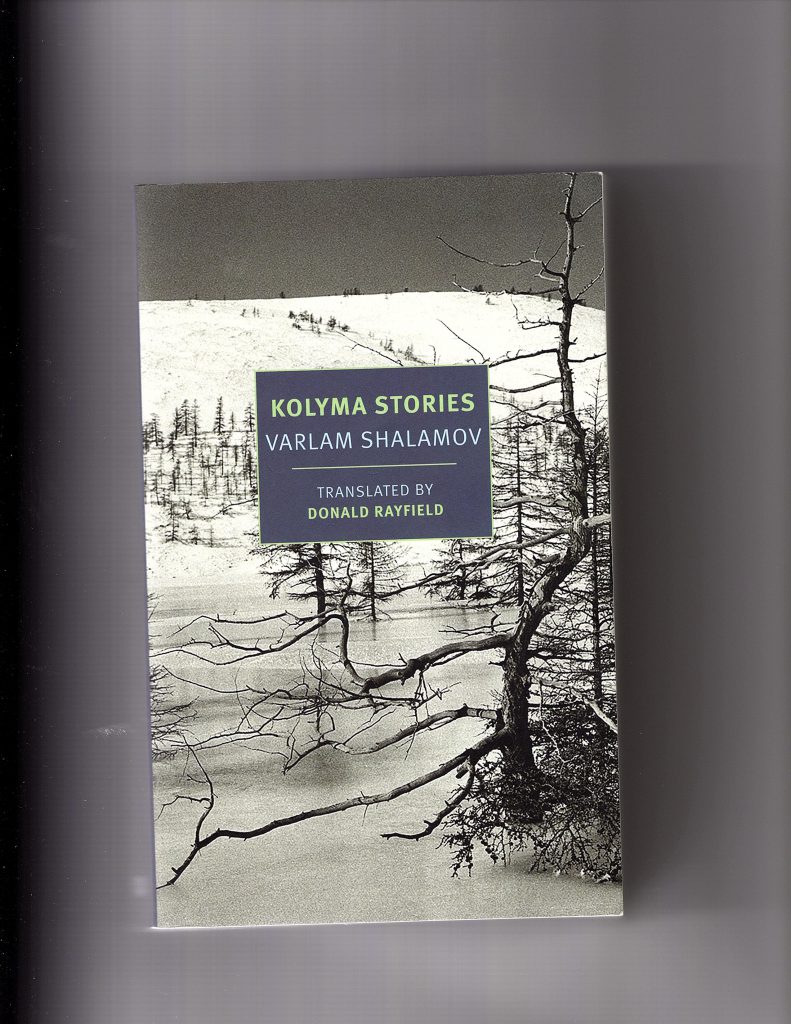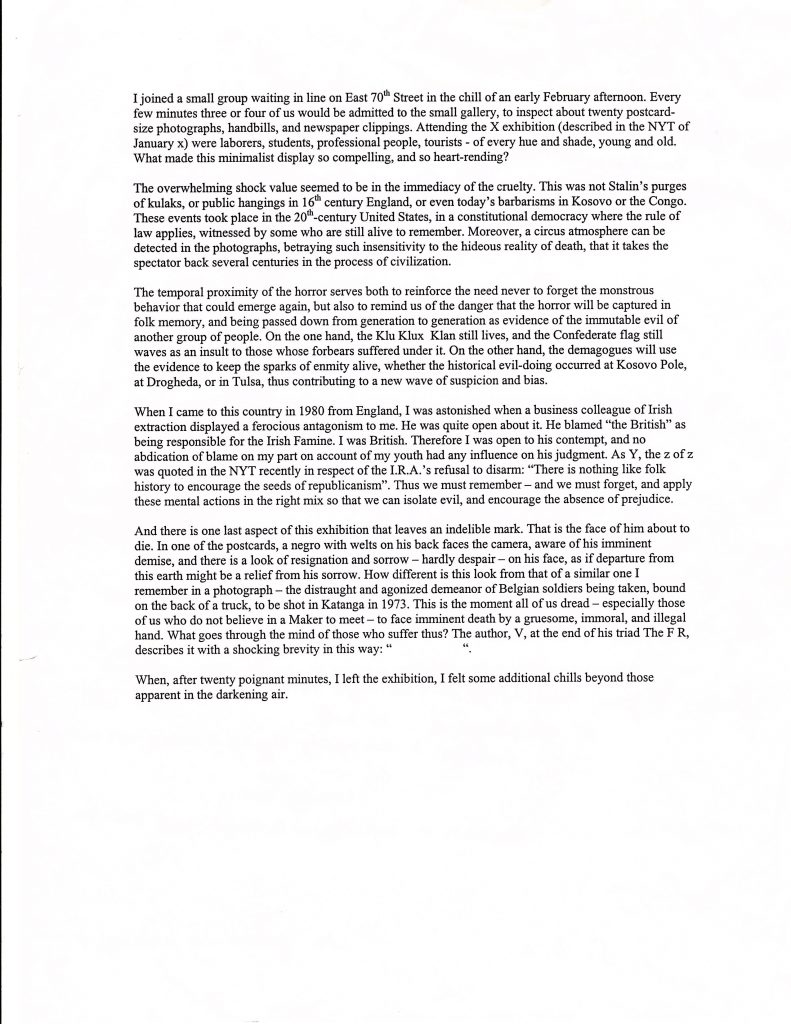
I interrupt this bulletin to note the deaths of two significant persons related to the world of intelligence that have been recorded in NYT obituaries in the past ten days, reminders of the feverish days of World War II.
On April 2, Walentyna Janta-Polczynska died in Queens, New York. She was appointed personal secretary to General Wladyslaw Sikorski, the prime minister of the Polish government-in-exile, in 1939. She translated and prepared reports by Jan Karski, who brought the first eyewitness accounts of atrocities against the Jews in Warsaw. In 1943 she assisted in Sikorski’s funeral arrangements after his plane crashed after takeoff from Gibraltar. She was born in Lemberg (Lvov, now Lviv): her father ‘hailed from an English family that had initiated oil exploration in eastern Poland’. Ms. Janta-Polcynska was 107.
On April 7, Henry Graff, historian, died in Greenwich, Connecticut, aged 98. In November 1943 [date probably wrong], he translated part of a message sent by Hiroshi Oshima, the Japanese ambassador in Berlin who had regular discussions with Hitler, and passed on encrypted summaries of what he learned. In this case, Oshima described German plans for countering the expected D-Day invasion. Nine months later [sic], shortly after Hiroshima, Graff translated a message from Japan to the Soviet Union, for some reason directed at Bern in Switzerland, asking for help extricating Japan from the war. [I informed the ‘New York Times’ of these anomalies, but have not received a reply, and, as yet, the publisher has not issued a Correction.].

Next, four anecdotes . . .
- Soon after we retired to Southport, North Carolina, at the beginning of August 2001, I made a trip into Wilmington, a town about thirty-five miles away, a port city on the Cape Fear River. I wanted to explore it, to familiarize myself with its layout, find out where the libraries and bookshops were, and, while I was about it, to get a haircut. I found a barber’s shop in a quiet street, went in, and sat down, waiting for my turn. I was then horrified when I heard the man I believed to be the owner, snipping away at a customer’s hair, say: “Of course the blacks were much happier when they were slaves.”
I had come across some casual racism in my time in the United States, mainly in the South, but not exclusively there, and had even experienced some ‘ethnic’ hatred directed at me, but I had never heard such a blatant example of stupid, ugly, patronizing, disgusting, ignorant speech before. How dare this redneck put himself in the minds of his fellow citizens, and make a facile conclusion about them and their ancestors of almost two centuries ago? I would not call it ‘prejudice’, because this insect had clearly thought about the matter before coming up with his well-exercised opinion. And the fact that he was ready to speak up openly about it, in the presence of a stranger, made the expression of his opinion even more frightful and alarming than it would otherwise have been. Was this a common feeling among ‘white’ Wilmingtonians?
I felt like standing up and biffing the perpetrator on the nose, but thought that causing an affray so soon after my arrival in South-Eastern North Carolina might not be a good idea. The barber might claim that I had misheard him, after all, or that it was a joke taken out of context. But I knew it was not. I simply stood up and walked out of his establishment, and found a proper hairdresser in the centre of town. Maybe that was a shabby exit, not confronting evil when it pushes its voice into your face, but it was all a bit overwhelming at the time.
I have since discovered that sentiments like the barber’s are not that uncommon, and that even though Wilmington has overall become more civilized by the arrival of Yankees and others in its population, and joining its media outlets, etc. (much of it resented by some locals, I should add), a combination of resentment that the Civil War was lost, and regret over the decline of ‘white’ supremacy, can still be found in many pockets of New Hanover County and its surrounding rural areas.
2. Early in 2000, about eighteen months before we left Connecticut for good (we have not been back in almost twenty years), I read in the New York Times about a photographic exhibition being held at a small gallery in New York City. It concerned records of lynchings that has been carried out in the United States in the twentieth century, with some of the photographs taken after I was born (in 1946). These had apparently not been shown before. I had reason to make a business trip to New York – about an hour away by train – so I decided to make time to visit this gallery. I am not somebody who chases down the grisly out of some perverse pleasure, but I believed that this might be a once-only opportunity to become educated about a horrific aspect of American history about which I had only vague understandings.
It was an experience both moving and horrifying. I had read about the British soldiers who discovered Belsen, and were so shocked by what they found that it made them physically sick. I had a similar reaction – not quite so physical, but creating that roiling in the stomach. To see a ‘black’ man strung up on a tree, and ‘white’ families celebrating as if it were a public holiday (which is how they probably treated it), was nauseating. What made it even worse – although this is a specious argument – was that it had taken place in my lifetime. One thinks of ‘medieval’ practices, but all this happened frequently in the first part of the twentieth century, in a country that made all manner of claims about human liberty, and ‘making the world safe for democracy’.

After all, this was not Stalin’s Gulag, where in fact the horrors were far worse in number. I have just read Varlam Shalamov’s Kolyma Stories, covering a largely contemporaneous period (1937-51) when Shalamov spent most of his incarceration working as a slave in or around the notorious goldmines of Kolyma. The death rate there was truly monstrous, and dwarfed the assaults on humanity represented by the lynchings. Yet the photographic record of Kolyma is scanty: the world knows little about the broken bodies, the mutilations and executions. Shalamov’s vignettes provoke similar feelings of disgust, but the Gulag reflected a different kind of cruelty – the abomination of State-run terror run amok. Prisoners were sentenced to ten years in Kolyma for being members of the Esperanto Society, for expressing a hope for the return of the Austro-Hungarian Empire, for praising the exiled poet Ivan Bunin, for complaining about the length of the queue for soap, or on the false denunciation of a neighbour, and few would survive. The lynchings were private vigilante operations, and took place in a supposedly democratic society run by the rule of law. How can one compare them? A few hundred lynchings in twentieth-century America, six million dead in the Holocaust, over a million in Kolyma alone? Every brutal death was an individual calamity.

(Amazingly, I was able to dig out, on the afternoon after I wrote the above two paragraphs, my clippings file on the exhibition, and related topics. I had forgotten that I had composed a brief memorandum immediately afterwards, which I present here, in its unimproved form. As is evident, one or two of the references are incomplete, but I believe it sums up well my immediate disgust. I recall now that the main reference I left unfinished was the final passage of Emanuel Litvinoff’s searing Faces of Terror trilogy, where Peter Pyatkov is taken down to the cellars of the Lubianka:
‘Cold metal against the nape of his neck. His moment.
“Who am – ? . . .’
I also reproduce in this page some clippings from The New York Times of that time. A warning: they are discomforting to look at.)
It was at that time that I understood there was something much darker and more pervasive going on. I had rather naively imagined that the absurd colour barriers and divisiveness had broken down in the ‘Great Society’ of the 1960s. I knew that it had been illegal in North Carolina, up until 1965, for a marriage between a ‘white ‘ person and a ‘black’ one to take place (which would have meant that Sylvia and I could not have wed), but thought that these absurd racial categories were gradually being eroded. Other political trends, however, were in fact re-emphasising this false science.
3. A few years after we moved down her, Sylvia, Julia and I made a visit to the Orton Plantation. This was one of the few private estates that are open to visitors in this neck of the woods – or even across the whole of the country. It is attached to the Brunswick Town/Fort Anderson Historic Site, half-way between Southport and Wilmington, on the west side of the Cape Fear River. Brunswick Town was a port that was destroyed by the British in 1776, but never rebuilt, while Fort Anderson was constructed on the ruins, as a fort in the Civil War. There is not much to see there, especially for those familiar with the variety of castles that can be inspected in Great Britain, but it is of great historic interest, and a compulsory target for any tourist or resident of the area.

Near the historical site lies the Orton Planation, of which the jewel is the antebellum country house, considered to be one of the best of its kind. It has apparently been used in many movies and TV shows (none of which I profess to have seen: Divine Secrets of the Ya-Ya Sisterhood somehow escaped my attention), as the following link explains (https://en.wikipedia.org/wiki/Orton_Plantation) . We were able to walk around the park, and survey what had been the rice plantations, worked by hundreds of slaves, that led down to the Cape Fear River. We were reminded of how many of England’s fine country houses were constructed with the wealth derived from the exploitation of slaves, only in their case not in their back yard, but mostly thousands of miles overseas, such as in St. Vincent, where Sylvia was born.
The house itself was not open to the public, but as we walked near it, an elderly gentleman saw us, and approached us, and, perhaps after learning where we were from, invited us to take a look round. I don’t recall much of the details (there was a billiard-table in good condition), but it was charming house, and we considered ourselves very fortunate. The gentleman gave his name as ‘Sprunt’: I worked out later that he was probably Kenneth Murchison Sprunt, whose name appears in the Wikipedia entry. In 2010, the Sprunts sold the whole property to Louis Moore Bacon, a hedge fund manager, and descendant of the house’s original owner and builder, Roger Moore. The grounds have not yet been re-opened.
4. Earlier this month, Sylvia and I filled out the US 2020 Census forms, on-line this time. It was quite a simple operation: we were asked for birthdate information for the three of us, and whether we rented or owned the house, and whether we had any mortgage. What business was it of theirs, we asked ourselves? And then we came to the bulk of the form, which was about ‘ethnicity’. The first part required us to state whether we were ‘Hispanic’ or not – and did not allow this binary question to be ignored! At the same time, it reminded us that ‘Hispanics’ or ‘Latinos’ could be of any race.
How in heaven’s name were they going to use this information? Deciding what federal aid should be given to each State, I suppose, but how could they verify whether anybody really understood the question, or could even be relied upon to tell the truth on the form? And how would such information affect the government’s decisions? I thought of a root of my maternal-grandfather’s family, the Robinis, who were Huguenots escaping via Guernsey, and suddenly felt a surge of Italianate fervour. And then there was my unexplained partiality to Neapolitan ice-cream and pizza margherita. Were such features part of my ‘identity’? H’mm. But there was no way out. We decided to say ‘No’, and move on.
The last section concerned ‘race’, and in this area the Census Bureau believed they were on firmer ground. The first option was ‘White’, but if you rejected that, it offered a whole host of exotic categories to choose from, including ‘Pacific Islander’ (about which I have written before here). Why it believed that, in 2020, American citizens would universally want to define themselves in such terms is absolutely beyond me, but it keeps many Census Bureau people in employment, and helps to foment those minor distinctions that can breed resentment, and feelings of entitlement, and which accompany the notions of ‘identity’ which the sociological professors get so excited about. Fortunately, the very last option was to tick off ‘Other’, and Sylvia and I happily entered ‘Human’ in the box, and were gratified that our submission was not rejected. But should we expect a visit from the Census Police, to verify that we are indeed so?
* * * * * * * * * *
I shall get round to ‘Wilmington’s Lie’ soon, but I need to digress over some science, and some definitions. As readers may have noticed, in this text I have used ‘black’ and ‘white’ in quotation marks. Since all reputable scientists have concluded that ‘race’ is a sociological construct, and that the genetic differences between human beings of different pigmentation are smaller than those found within any one particular ‘ethnic group’, I struggle with what language to use in this discussion. American institutions have for a long time advised us that anyone born with a drop of ‘black’ blood should be defined as ‘black’, which is obviously nonsense. Yet using some term is inescapable in this discussion. Selecting the term ‘Negro’ is disdained these days; ‘colo(u)red’ is a ridiculous hangover from South African categorisations, although it endures in the National Association for the Advancement of Colored People; ‘African-American’ is simply inaccurate (what about Egyptians?), and some famous Americans, such as Colin Powell, have objected to it (his parents came from Jamaica), since they do not regard themselves as having ‘roots’ in the African continent.
To remind readers of the stubbornness of some sectors of government and the academic world to recognize the facts about race, I present the following paragraphs. I picked them out of a book review from the Listener of 13 November, 1935. For some reason, I had acquired a few years ago a bound copy of the issues of that magazine from September to December 1935: they present a fascinating perspective of the world seen from a variety of educated viewpoints as the totalitarian states of Nazi Germany and Soviet Russia started to exert an eerie hold over the democracies’ attentions. The review is titled Racial Problems in Europe, and it comprises a critique of We Europeans, by Julian Huxley, A. C. Haddon, and A. M. Carr-Saunders, written by A. S. Russell.
“‘In a scientific age’, say the authors, ‘prejudice and passions seek to clothe themselves in a garb of scientific respectability; and when they cannot find support from true science, they invent a pseudo-science to justify themselves’. There is today a pseudo-science of ‘racial biology’ which has been erected to justify political ambitions, economic ends, social grudges, and class prejudices. ‘Race’ and ‘racialism’ are regarded by the authors as almost blasphemous terms, and it is against the fallacies associated with these vague and mischievous ideas that the principal part of the book is directed.
People who talk about pure races nowadays do not know what they are talking of. You cannot judge a man’s race accurately from externals. You can be certain of a man’s racial purity only when you know his ‘genetical constitution’. The discovery of the gene, thousands of which go to the physical make-up of an individual, has revealed how immensely more complex inheritance in the physical sense is than was thought of in old days, when the characteristics of a child were considered to be a mere blending of those of the parents. It was convenient at one time to make a rough classification of Europeans into the Nordic, the Alpine and the Mediterranean ‘races’; the first exemplified in the tall, ‘long-headed’, fair-haired Swede; the second in the ‘round-headed’ Russian peasant of medium height; the third in the dark, ‘long-headed’, small inhabitant of southern Italy. Actually these types, like every other in Europe, are just different mixtures; they aren’t in any sense pure races. Everybody in Europe is of mixed race as evidenced by his or her ‘genetical constitution’. And the reason for this is plain. For tens of thousands of years man has been on the move in every part of the world inter-breeding and inter-breeding. There might have been pure races at one time; sections of mankind might have got isolated geographically from the rest for thousands and thousands of years and evolved so as to become adapted to their climactic environment; but those days are long past and it is in the highest degree unlikely they will ever recur.”
One might observe that even Wallace didn’t quite get it, what with his references to ‘racial purity’ and ‘inter-breeding’. Yet the challenge to the monstrous racial theories of Hitler is clear. Nevertheless, in what could be considered a provocative commentary on Hitler’s dogma, later in the review, Wallace questions the authors’ application of their research into the identity of the Jews (“ . . . the authors assert the Jews are of mixed origin and no more different from the mass of Europeans than ourselves or the Germans” – a judgment that would anticipate what Schlomo Sand wrote recently in his engrossing and controversial Invention of the Jewish People). Wallace concludes by accepting that nations of ‘inter-marriage’ are based purely on sentiment and tradition. I could point to dozens of articles that I have read over the years that would reinforce the assertions of Huxley and co. They got it right eight-five years ago, but too many people still resist those notions. For example, I marvel at the unscientific way that certain liberal arts critics misrepresent how genetics works. My latest offering: “Whether they have been hard-wired into a Jewish genetic make-up after centuries of the singular Jewish experience it’s impossible to prove, but Lebrecht’s passion is persuasive”, from Mark Glanville’s review of Norman Lebrecht’s Genius and Anxiety, in the TLS of February 28.
And now to Wilmington’s Lie. I had been vaguely aware of the murky secret that the city of Wilmington had tried to hide. I have another clipping, from the New York Times of December 19, 2005, showing a report by John DeSantis headed ‘North Carolina City Confronts Its Past in Report on White Vigilantes’. His second paragraph sums up the event very succinctly: “Only scant mention is made, however, of the bloody rioting more than a century ago during which black residents were killed and survivors banished by white supremacists, who seized control of the city government in what historians say is the only successful overthrow of a local government in United States history.”
What prompted the attention then to the happenings of November 10, 1898 was the release of a draft of a 500-page report ordered by the state legislature. In what may come as a surprise to many European readers, after the Civil War, the government of Wilmington, which had been ruled by the Democratic Party, was replaced by a coalition that was dominated by Republicans, and contained many ‘blacks’. (It was the Republican Abraham Lincoln who had resisted the Southern States’ rights to continue slavery, and the switch of party allegiances around civil rights and white supremacism would come much later.) The growing power and influence of those persons whom reactionary Democrats considered as inferior to them, and responsible for diminishing their prosperity, caused a mass of resentment that broke out murderously before Election Day of November 9, 1898. A mob of white vigilantes invaded ‘black’ businesses, most notably the printing-press of The Daily Record, and shot ‘black’ men in the streets of Wilmington. The report estimated that up to a hundred ‘black’ deaths were recorded, and hundreds fled from the city.

I regret not getting hold of the full report, which, according to de Santis, was to be delivered the following year. There was some controversy over its release, as many felt that the ‘mistakes’ of over a hundred years ago should be buried. In 2008, however, a Memorial Park was opened in Wilmington, although the City still seems very ambivalent about promoting and describing it. A link on the City’s webpage, indicating the website of the memorial, leads to a Facebook Page: a full description can be seen at https://docsouth.unc.edu/commland/monument/842/. I have visited the memorial, and was moved by it, but was sorry it had been placed somewhat off the beaten track, and found the symbology puzzling. The monument itself consists of six 16-feet tall paddles, which, according to a plaque nearby, refer to the role of water in ‘the spiritual belief system of people from the African continent’. Why the memorialists would want to generalise all the religions of the African continent in that stereotypical way, especially when almost universally those who suffered at the time of the events (and those who come to honour them today) were and are devout Christians is one of those weird dimensions of ‘identity’ and ‘heritage’ that dominate discussions of such topics today.
And then, earlier this year, David Zucchino’s account of the incidents, Wilmington’s Lie: The Murderous Coup of 1898 and the Rise of White Supremacy, was published. Zucchino gained his Pulitzer Prize for feature-writing in The Philadelphia Inquirer in 1989: he has also published Thunder Run and The Myth of the Welfare Queen. His book provides a very thorough history of the events that led up to what he characterises as the 1898 ‘coup’: the action was, however, not so much the directing ousting of a governing body as the terroristic oppression of those citizens who would democratically elect that group, but the result was the same. Zucchino uses the official report (available at https://digital.ncdcr.gov/digital/collection/p249901coll22/id/5842, released on May 31, 2006, which I have not read), as well as an account by LeRae Umfleet, the principal researcher on the project, A Day of Blood, which I have also not looked at. So I regret I cannot compare Zucchino’s account with Umfleet’s. Zucchino has also trawled through an impressive list of books, unpublished memoirs and diaries, articles, theses, dissertations, and government publications and documents.

Zucchino takes his readers painstakingly through the background that led to the vigilantism of 1898. In the second half of the nineteenth century, Wilmington became the largest city in North Carolina, and freed slaves flocked to it for the opportunities in trade and exports that it provided. In the author’s words, ‘it was a bustling port city with a burgeoning African American middle class and a Fusionist government of Republicans and Populists that included black aldermen, policemen and magistrates.’ The Ku Klux Klan had made an attempt to roll back Reconstruction in 1868, but had been driven out of town. Abraham Galloway (of ‘mixed race’) had been the vigorous senator who had encouraged the locals to defend their right, and when he died in 1870, the cause was taken up by Alexander Manly, the publisher of the Daily Record. “Manly”, Zucchino writes, “could easily have passed as white, the preferred option of so many so-called mulattoes.” Manly spoke up for Negro rights, and pointed out the hypocrisy that occurred when ‘white’ supremacists spoke up for the virtue of their women intermingling with ‘black’ males, while they themselves had affairs with ‘black’ women. He thus became the prime target of the frustrated Democrats.
In 1897, several lynchings occurred in Georgia. ‘White’ leaders could not imagine that a sexual act between a ‘white’ woman and a ’black’ man could be consensual, and vigilante justice was frequently the outcome. After a Mrs. Felton defended the practice of lynching, Manly wrote an editorial that pointed out the hypocrisy, and ridiculed the insecurity and self-delusion that lay at the heart of the hatred of Southern ‘white’ men. Thus the office of the Daily Record became the prime target of the rebels. Two days after voting took place for the state legislature on November 8, 1898, over two thousand Red Shirts (as they were called), heavily armed, piled into Wilmington looking for victims. Buildings were burned, and at least sixty ‘black’ men were killed in the streets.
Zucchino reports how the Wilmington Messenger published the lyrics to ‘Rise Ye Sons of Carolina’ on November 8, 1898.
“Proud Caucasians one and all . . .
Hear your wives and daughters call . . .
Rise, defend their spotless virtue
With your strong and manly arms . . .
Rise and drive this Black despoiler from your state.”
It is a message that anticipates Hitler. A shocking and nauseating refrain, blatantly ignoring the fact that the forbears of these ‘black despoilers’ had been brought to those shores against their will, in utterly cruel conditions, when, if they had survived, they were forced into slavery. What demagogues, preachers or teachers had embedded this sort of thinking? How could anyone today not denounce such ugliness?
I shall not relay all the details of the coup. Readers can pick up the book. Zucchino has performed an absolutely vital task of chronicling the details of this ghastly event, one that remained buried for so long. Yet Wilmington’s Lie is not very easy reading: not because of the grisly subject-matter, but because the author lacks a good narrative sweep, and moves around without a clear chronology. Events outside Wilmington are sketched very thinly, so we do not gain a good understanding of, for example, why federal or state officials were so reluctant to intervene. He leaves the meatier issues for the Epilogue, almost as an afterthought, such as the way that Wilmington became an example for ‘white’ supremacists in other states to pick up on voter suppression, and vicious attacks on ‘blacks’. He has nothing to say about the culture and political battles that encouraged such cruelty, or how the fundamentalist Josiah Nott, who had Gobineau’s dangerous writings on the Aryan race translated, exerted such a swift and penetrative effect on the Southern states and the rise of the Ku Klux Klan. Where did they learn about ‘Caucasians’? This, for me, was an extraordinary omission.

Moreover, Zucchino makes no references to the expulsion of indigenous Americans of a couple of generations before, which these horrors echoed, or even the infamous Dawes Act of 1887, which applied different racial principles to the treatment of indigenous American tribes. The author makes a link between the events of 1898 and current attempts to implement voter ID laws: such initiatives may or may not be stirred by similar impulses, but Zucchino does not examine the case. He skims over in one paragraph the bouleversement in Party allegiances (when minority rights became a Democratic plank of policy) that was caused by the Civil Rights movement in the 1950s and 1960s, noting that in 1972 North Carolina elected its first Republican US senator for seventy-four years – the notorious Jesse Helms. And lastly, he appears to be a prisoner of his own cultural milieu – talking about ‘white blood’ and ‘black blood’ as if they were realities, and never analysing seriously the pseudo-science behind these notions. (As I was completing this piece, I encountered the following quotation from the NYT obituary of Abigail Thernstrom, a stolid opponent of affirmative action, a woman who had grown up in a communist household: “Race is the American dilemma. It is race that, you know, keeps this country in agony. It is our most serious domestic problem. And therefore, we want to think specially hard about anything that involves sorting people out on the basis of one drop of blood of this or that.”)
I noticed one poignant aspect. The captain general of the Ku Klux Klan in North Carolina in 1868 was a Colonel Moore, who led the attempt to terrorize ‘blacks’ in April 1868, was then repulsed, and was left licking his wounds inside Thalian Hall. Thirty years later, no longer Klan leader, he was still active in Wilmington, and had been elected to the County Board of Commissioners in the corrupt elections of 1898. Yet he was outsmarted by another political rival, Colonel Alfred Waddell, who led the attack on Manly’s newspaper offices. After the killings of November 10, one of the businessmen who tried to persuade Waddell to allow the ‘blacks’ who had been chased out of town, since he needed them for loading the seven steamships backed up at the port, was a James Sprunt. Sprunt ‘told a reporter he was confident that the city’s blacks would be reassured by Mayor Waddell’s public declarations of equal treatment for both races’. He had been born in Glasgow, was British vice-consul, and later became renowned for his philanthropic work in Wilmington, and his dedication to local history.
Colonel Roger Moore was a descendant of Roger Moore, a brother of Maurice. Maurice Moore sold the Orton Planation to Roger when the latter moved into the area from South Carolina, in 1725, and together they founded Brunswick Town. Roger Moore had to deal with unfriendly native Americans, who destroyed his first house, but then set up the rice plantation with slave labour. The gentleman whom we met at the Orton Plantation, Murchison Sprunt, was a grandson of James Laurence Sprunt, who, with his wife, Luola, purchased the property in 1904, on the death of his father-in-law, Colonel Kenneth MacKenzie Murchison, a Confederate military officer. In May 2010, as I described earlier, the Sprunt family sold the Plantation to Louis Moore Bacon, who informs us that he is a direct descendant of the first Roger Moore. (How he might be related to the notorious Klansman Roger Moore, I do not know.)
Thus are the fortunes and careers of North Carolinians – like those of everyone, I suppose –intertwined. Allowing for about ten generations since 1725, Louis Moore Bacon could also claim that he was the direct descendant of about one thousand other people. Yet, like many others, he favours a single lineage with a name that endured, and a known family history. Likewise, there are probably thousands of other persons who could claim ‘direct descendancy’ from Roger Moore, but who did not have the money, the genealogical insights, or the personal interest, to want to bid for the Orton Plantation, and invest in it. That is the way the world works.
Back to today’s Wilmington. It is easy for someone like me to sit back, and proclaim that all these racial categories are absurd, when such loftiness in fact could show an insensitivity to the realities of the stories of humiliation passed down, and the daily insults that continue. Whenever I walk around in Wilmington, I am especially careful, say, to open the door for any ‘black’ person coming into the Post Office, and offer them a friendly ‘Take your time, sir!’, or ‘Have a good day, madam!’, perhaps to balance the affronts or rudenesses they may have encountered from persons who share my skin pigmentation, and I deliver such politesses a little more enthusiastically than I might do to anyone else. Maybe it is condescending behaviour, but I trust it helps. Because I can hope for the day when these categories will be meaningless (and I think of our beautiful Anglo-Irish-Italian-French-German-West Indian-Vietnamese grand-daughters – ignoring, for now, the Persky branch from Minsk), but have to accept that reality is different. So long as census-takers, white supremacists, affirmative action lawyers, ethnic studies professors, fundamentalist preachers, racial activists, identity politicians, Dixie whistlers, sociologists, psephologists, pseudo-historians, eugenicist neo-confederates, Marxist academics, cultural appropriation specialists, self-appointed ‘community’ spokespersons, and general grudge-grinding journalists have a job to hold on to, the distinctions will continue. And, after all, if the New York Times says that a ‘Latinx’ community exists, it must be so, right?
My gestures are a kind of reparation, I suppose. And thereby lies one final dilemma, as the irrepressible and overexposed Ta-Nehisi Coates has promoted, urging that ‘blacks’ should receive money for the injustices performed against them (or their forebears). Yet not all those who would have to pay are guilty, nor are all those who would be remunerated necessarily victims. None of us automatically inherits the sins or the virtues of our forebears, and each us should be free to reject the indoctrination of parents, school or religious institution.
I made light of this at my seventieth birthday party a few years ago, attended by a few dozen of my closest friends, at which I made a speech (see Taking the Cake). At one point, I took out a piece of paper from my jacket pocket, and told the assembled diners that it was a letter from the U.S. Department of Justice. I proceeded to read it: “Dear Mr. Percy . . . blah, blah, blah, . . . We have to inform you that, according to recent legislation, you, as a descendant of colonialist oppressors, are hereby ordered to make the following reparations payments to victims of such injustices. (Pause.) Mr. Tiger Woods: $5,000. Mrs. Sylvia Percy: $10,000. And to Mr. Douglas Hamilton (not his real name, but a prosperous ‘black’ friend of mine sitting at Table 4): $50,000!”
Yet so long as that barber, and persons like him, are around, it is no laughing matter.
(Recent Commonplace entries can be found here. This month’s collection includes a special not-to-be-missed feature on Gavin Ewart and light verse.)
